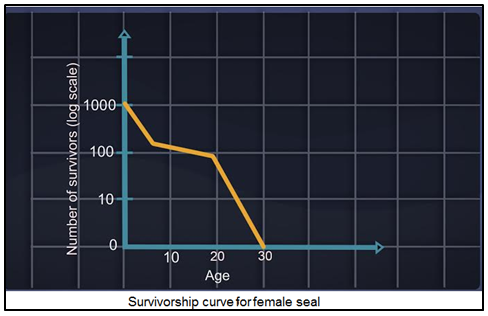10th Grade > Physics
ELECTRICITY MCQs
:
B, C, and D
Electric current in a circuit is caused due to the flow of free electrons. Each electron carry a charge of approximately −1.6×10−19 C. Protons also carry equal amount of charge but are not free to move. Hence. they are not the mobile charge carriers.
:
C
All electric cells have two terminals, positive and negative terminal. If two cells are connected with opposite polarities as shown, the net potential difference across them is the difference of the individual EMFs of the cells.. Hence, there is no net potential difference in the case the cells are identical. Therefore, current will not flow and the bulb will not glow.
:
A, B, and C
The resistance of a conductor of length, l and cross-sectional area, A is given by R=ρlA where ρ is the resistivity. Factors affecting the resistance of a conductor are:
- Length of the conductor - Resistance is directly proportional to the length of the conductor.
- Area of the cross-section of the conductor - Resistance is inversely proportional to the cross section area of the conductor.
- Material of the conductor - Resistance depends on the material of conductor. It is quantified by resistivity. Resistance is directly proportional to resistivity.
:
D
Given the wire is cut into 5 equal parts.
Let the initial resistance of the wire be R
where R=ρlA→R∝l (length of the wire)
then, resistance of each one of the five parts =(R5)
Equivalent resistance (R') of resistors connected in parallel is given by 1R′=1R1+1R2..1Rn
Equivalent resistance (R') of five parts connected in parallel is given by:
1R′=1(R5)+1(R5)+1(R5)+1(R5)+1(R5)R′=R25
Therefore, RR′=25
:
A
According to Ohm's law:
V=I×R; this means if R (resistance) is constant, current increases linearly as the voltage is increased.
At a constant temperature, following is the graph between voltage and current stated as Ohm's law.
From the above graph, we can say that the current varies linearly with potential difference.
:
B
Volume of a solid is the product of length and cross-sectional area. V=AL
Since volume is same in both the cases, the length of second wire will be half of the length of 1st wire.
Accordingly, let length of 1st wire = L
area of 1st wire = A = 1mm2
So resistance R=ρLA=ρL1=ρL
Length of the second wire =L2 and
area of 2nd wire A=2 mm2
So resistance of 2nd wire R′=ρL2A
R′=ρL2×2
R′=14(ρL)
R′=14(R)
RR′=41
R : R' = 4 : 1
we get the resistance of the 1st wire is 4 times the value of resistance of the 2nd wire.
:
B
In alloys, the increase in temperature results in an increase of its resistance, but unlike pure metals, the increase is relatively small and irregular. As the temperature increases, the molecules in the atom vibrate with more frequency, they collide with each other more frequently which makes it tough for the movement of free electrons. Thus the resistance increase with increasing temperature in the metal.
:
A, C, and D
Electrical power, P can be defined as the rate at which electrical energy (W) is consumed in an electrical circuit.
⇒P=Wt
Potential difference, V across any circuit is defined as the electrical energy W supplied by a source for a unit flow of charge (I×t)
∴V=WI×t
⇒W=V×I×t
So, power, P=V×I×tt=VI
By Ohm's law, V=IR or I=VR
Substituting the value of I in the expression of power, P=VI=V×VR=V2R
Since, V=IR, P=V2R=(IR)2R=I2R
Thus, electrical power P dissipated in a resistor =Wt=VI=V2R=I2R.
:
A
Resistivity depends on temperature. With the increase in temperature, the random motion of electrons increases. As a result, the number of collisions of electrons with the positive ions increases. Hence, the resistivity of all pure metals increases with the rise in temperature and decreases with the decrease in temperature.
:
A
The connection of wires is as shown below.
 We have to calculate equivalent resistance across the opposite corners i.e. across A and D or B and C. If we take two corners B and C, then we can clearly see that the resistances of AB and AC, and CD and BD are in series.
We have to calculate equivalent resistance across the opposite corners i.e. across A and D or B and C. If we take two corners B and C, then we can clearly see that the resistances of AB and AC, and CD and BD are in series.So the equivalent resistance across CAB is 2R ( CA and AB are in series) and CDB is also 2R ( CD and BD are in series).
The two equivalent resistances across CAB and CDB are in parallel. Hence, the equivalent resistance across the two corners i.e. B and C is 1Req=12R+12R.
On solving we get, Req=R. Similarly, equivalent resistance across A and D will also be R.
Hence the equivalent resistance across the opposite corners is R.

















